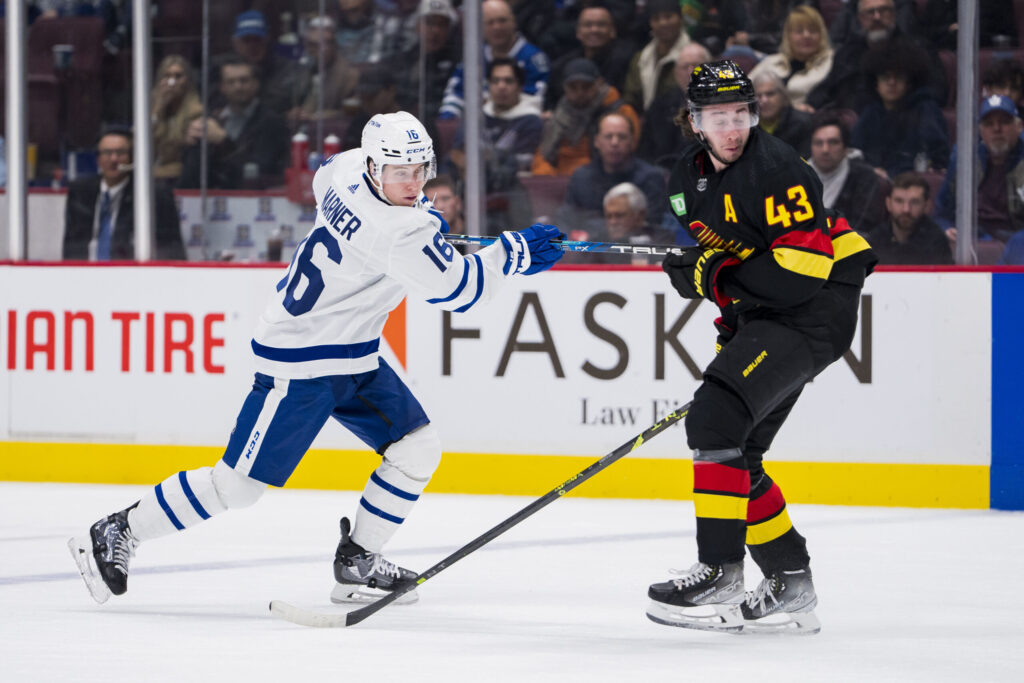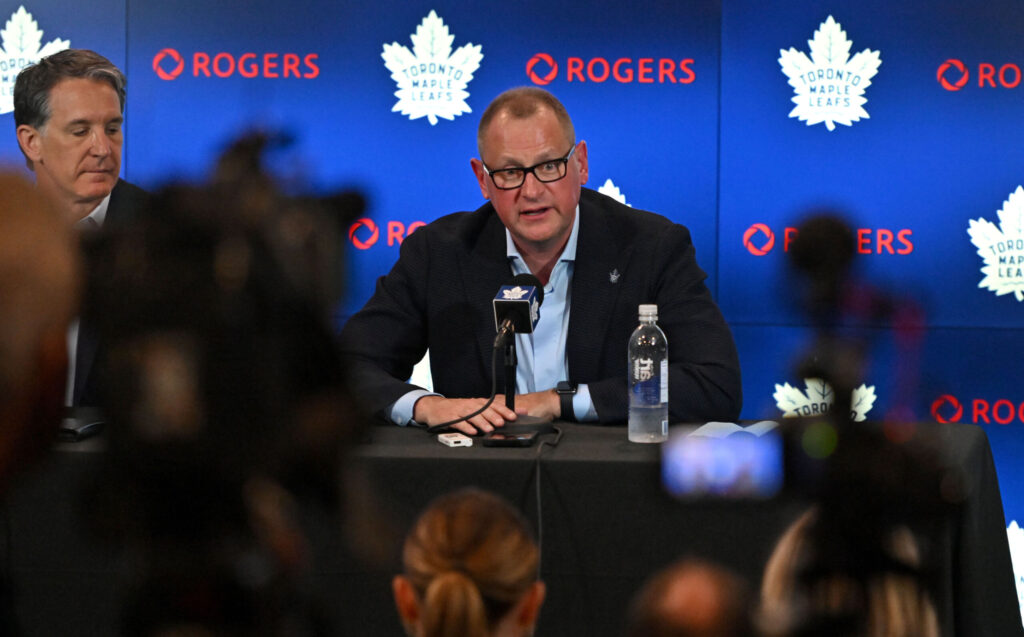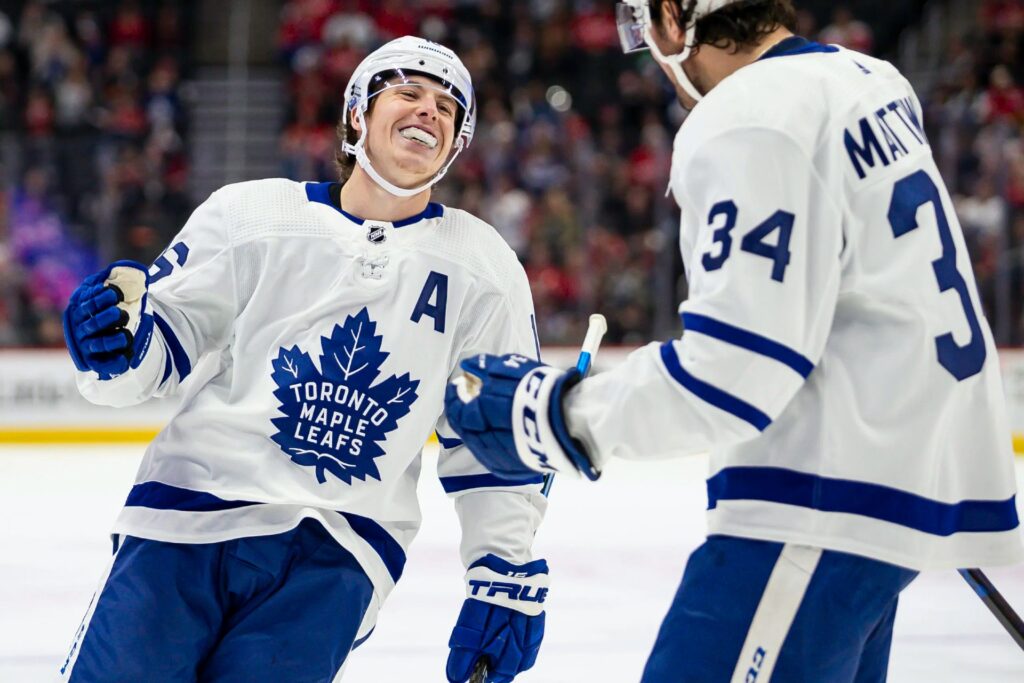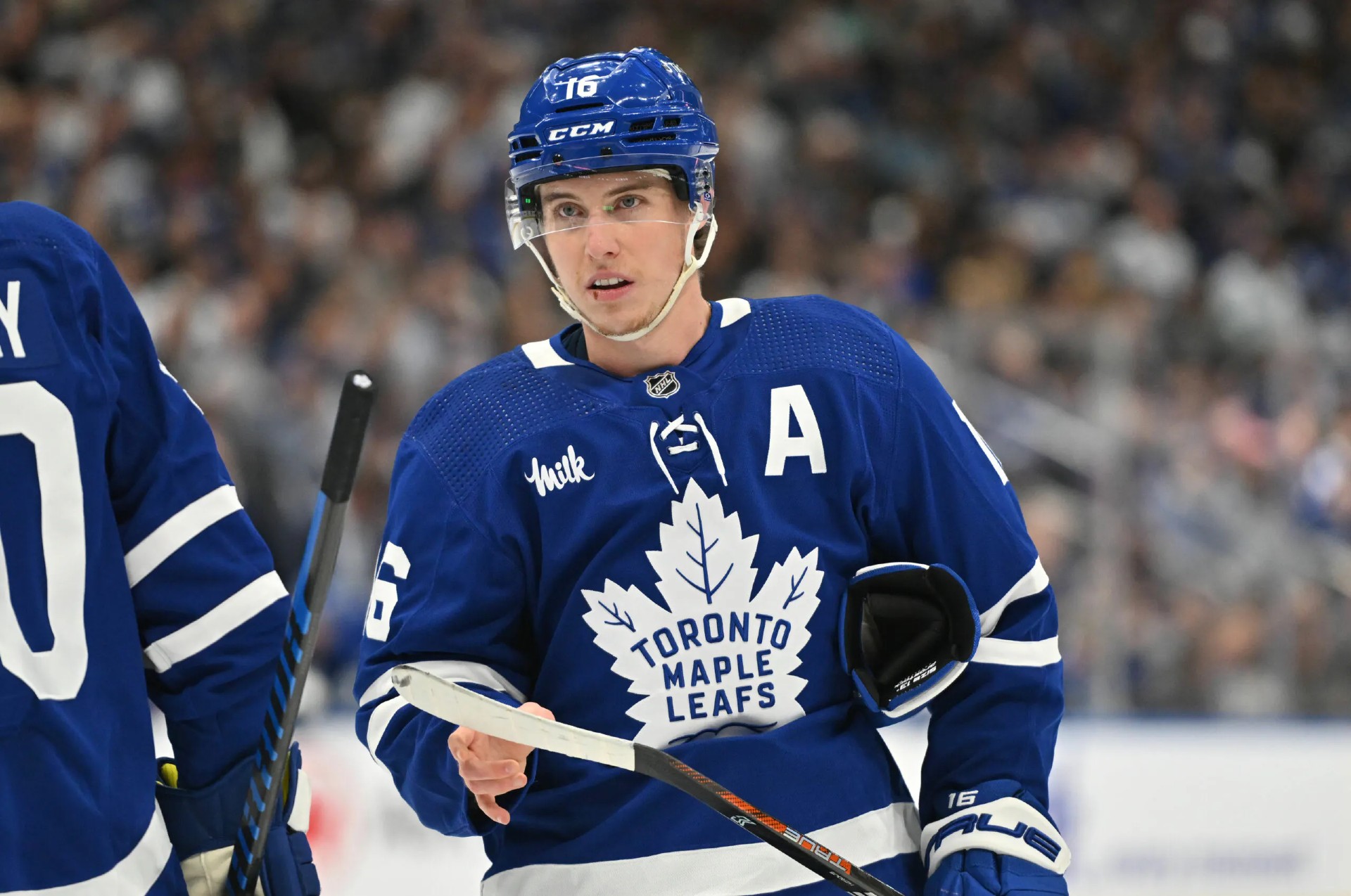The Maple Leafs’ first order of business this offseason was to address the head coaching position. Now that Craig Berube has been hired, the Leafs can move forward with their offseason plans, something Brad Treliving outlined in the Berube press conference:
“From the day we last saw all of you, I went to work on the coaching search. That file has been all-encompassing until this past weekend.
We have our amateur scouts in town. We are going through our amateur scouting meetings yesterday, today, and tomorrow. We have our pro-scouting meetings at the end of the week. And then we will dig into our player personnel.
As I said at the year’s end, we will look at everything. We have some really good players, and we don’t want to lose sight of that. But now Craig and I will sit down and start to dig into all of the other areas—roster construction and those types of things. We have a busy summer ahead.”
There are several balls to juggle – preparing for the draft, filling out the coaching staff, addressing the Leafs’ own free agents, and readying for unrestricted free agency – but all of those items dwarf in comparison to the Mitch Marner situation. It is the 12+ million dollar question, and there is much to sort through.
The two sides of the Marner trade debate

Let’s start with the simple facts. Since entering the NHL, Marner has the 10th most points in the league, sandwiched between Patrick Kane and Brad Marchand. He is an elite point producer who touches all aspects of the game. The Leafs use him in all situations, be it the power play, the penalty kill, when protecting a lead, or while trailing. In the five seasons Sheldon Keefe was in charge, Marner was fourth among NHL forwards in time on ice per game. He’s led the team in scoring in four of his eight seasons in the league.
His regular-season play is not in question, but in the playoffs, Marner has just 50 points in 57 games (11 goals), far below his regular-season pace (639 in 576 games). Now add in the team’s overall postseason struggles, his salary (which stemmed from a tenuous contract negotiation), his recent playoff struggles, and the fact that this is the last season of his contract. All eyes are on the Marner situation, and many fans have soured on the player.
Marner’s three points in seven playoff games this spring was his worst playoff outing production-wise since he joined the Leafs. In a year when they needed him to deliver more than ever due to injuries to William Nylander and Auston Matthews, Marner got worse, and no injury or offseason surgery was announced in the aftermath. We don’t need to attempt to explain it by citing slot passes or lamenting missed opportunities. Playoff time is about results, and he’s a star player who is paid handsomely.
At the same time, Marner is far from the first star player to have a terrible playoff. Artemi Panarin tallied just two assists in the Rangers’ first-round, seven-game loss to a New Jersey Devils team led by Akira Schmid (who is not even an NHL regular) just last season. Panarin came back this spring, racked up a career-high 120 points, and has 14 points in 15 playoff games so far as the Rangers are in the Eastern Conference Finals. Panarin is turning 33 this year, while Marner just turned 27.
We can find plenty of similar examples of players struggling in the spring before it suddenly clicked or of players who persevered through turmoil within their organization, stayed put, and then thrived. JT Miller’s name was chanted by the Vancouver faithful this spring. He was booed at home just last season. Winning cures everything.
Additionally, Marner’s age is starting to align with the average age of Stanley Cup teams. Last year’s Cup finalists, Vegas and Florida, were 27.6 and 27.7, respectively.
Just as some will argue Marner will never figure it out, we can just as easily argue that he eventually will, given his age, his history of production, and even some of his playoff campaigns in the past. He led the team in playoff scoring just last season with 14 points in 11 games.
You could argue either side of the ledger until you are blue in the face. Ultimately, what matters most to Treliving is filling needs and identifying the best way to extract value, which could mean keeping Marner or trading him.
The big risk when trading star talent

The start of the conversation has to include an acknowledgment that Marner is a very good player who the Leafs can simply choose to keep. Anything less, and Treliving will start backing himself into a trade that he will regret. That’s how you trade Nazem Kadri for Alex Kerfoot and Tyson Barrie or Larry Murphy for future considerations. Leafs fans need no reminding of players who were deemed unable to get it done in the playoffs, were traded away for far less than their value, and ended up winning Stanley Cups elsewhere.
Similarly, we can look to the Leafs’ division rival, the Buffalo Sabres, for a good example of the risk of trading stars because they weren’t carrying the mail or doing enough to end their playoff drought. Ryan O’Reilly was traded away to St. Louis for Tage Thompson, Patrik Berglund, Vladimir Sobotka, a first-round pick in the 2019 draft (Ryan Johnson), and a second-round pick in the 2021 draft (Benjamin Roger). Thompson’s emergence has made the trade salvageable, but the Sabres have not made the playoffs since, while O’Reilly has a Stanley Cup and Conn Smyth to his name.
Jack Eichel was traded to the Vegas Golden Knights for Peyton Krebs, Alex Tuch, a conditional first-round pick in the 2022 draft (Noah Ostlund), and a conditional second-round pick in the 2023 draft (Riley Heidt). Still no playoffs for the Sabres, but Eichel, too, has a Stanley Cup ring.
Sam Reinhart was moved to the Florida Panthers for Devon Levi and a first-round pick in the 2022 draft (Jiri Kulich). The Panthers are currently one win away from their second straight Stanley Cup Final.
The Sabres had all three of these players at the same time, liquified all of them for additional assets, and enjoyed zero success afterward while watching all three serve as driving forces in Cup wins or Cup finals appearances.
Trading away legitimate stars for multiple lesser pieces rarely works out well. Treliving lived it when he traded away Matthew Tkachuk, who had 15 points in 27 career playoff games at the time of the deal. There is a reason the old adage, “whoever gets the best player wins the trade,” is echoed across all major sports.
The Leafs’ offseason needs at C, D & G

Earlier in the offseason, I wrote that the Leafs must be honest about their roster. Their defense is a major need. They need to sort out goaltending. They need help at center ice.
I don’t look at Matthews, Nylander, and Marner and believe that they will provide what Connor McDavid and Leon Draisaitl are providing in Edmonton – huge playoff numbers overcoming fundamental issues like the Oilers’ weakness in net, playing Darnell Nurse and Cody Ceci in their top four on defense, lacking scoring depth, and a rookie head coach. It barely matters because Edmonton’s superstars are shooting the lights out. They are plowing their team right through those roster flaws. The Leafs’ top players clearly haven’t been able to accomplish this, and I’m not sure they ever will. Leafs brass needs to be honest about it and do a better job of building up the overall roster.
There is the potential to upgrade the overall roster this offseason thanks to the Leafs’ cap space and roster flexibility due to an influx of cheap contracts on the team, including Matthew Knies, Bobby McMann, Pontus Holmberg, Simon Benoit, Joseph Woll, and likely Easton Cowan. Even if we do not include Cowan in the mix, there are 10 forwards, four defensemen (including Conor Timmins), and one goalie already under contract with roughly $19.4 million in cap space to fill out the roster.
There is so much talk of retaining Tyler Bertuzzi and Max Domi, and while I understand it – they brought a different dimension to the team, improved as the season went along, and align with Berube’s physical style – it should be kept in perspective that they combined to score 30 goals last season (Domi scored just nine). Even a modest bump from Matthew Knies in his second full season in the league and a healthier Calle Jarnkrok and/or Bobby McMann likely bridges most of the goal gap left behind by their departure – to say nothing of Cowan’s potential to produce even modestly relative to his talent level.
This is a Leafs team whose second-most played defenseman in the regular season, TJ Brodie, couldn’t crack the playoff lineup. Justin Holl was their best right-handed defenseman in this run of playoff futility. His competition so far has been the likes of Luke Schenn, Ilya Lyubushkin, and Timothy Liljegren. They have all been useful at points – this is not to say they are bad players – but none are top-of-the-lineup, high-quality players.
The Leafs were 21st in goals against per game as a team this season. Only the Tampa Bay Lightning ranked worse among playoff teams (and were first-round fodder this spring).
Let’s look at the top four teams remaining. The Panthers’ blue line features Aaron Ekblad, Gustav Forsling, and Brandon Montour. The Rangers’ defense corps includes Adam Fox, K’Andre Miller, and Jacob Trouba. The Stars’ blue line is led by Miro Heiskanen, Thomas Harley (who many fans don’t know well, but he’s a former first-round pick who scored 15 goals and 47 points in his first full NHL season), Chris Tanev, and Esa Lundell. And then there is the Oilers, who really rely on Mattias Ekholm and Evan Bouchard while their top guns up front make up for the rest. Even then, Ekholm and Bouchard as their top two is miles ahead of what the Leafs possess at the top of their defense group. The Leafs’ top three defensemen in terms of time on ice this playoffs were Morgan Rielly, Jake McCabe, and Joel Edmundson. One of these defense groups is not like the others.
The Leafs can make a play in the market for high-priced defensemen like Brandon Montour (a Brantford native) and still adequately fill out the rest of their roster. They have more than enough cap space to afford any two of Chris Tanev, Brett Pesce, Matt Roy, Alexandre Carrier, Nikita Zadorov, Dylan DeMelo, or Jalen Chatfield.
Most of the right-handed options listed above would give the Leafs their best right-shot defenseman of the entire Matthews era (which feels almost sad to type). If Toronto signs any two of those defensemen and adds them to a top-four group that already includes Morgan Rielly and Jake McCabe, it’s likely the best overall top-four Leafs defense group since Pat Quinn traded for Brian Leetch in 2004 (20 years ago!).
This is partly an indictment of the organization as a whole. A 10-plus-year run in which the best season by a right-handed defenseman is a debate between Holl and maybe Cody Franson is unacceptable. But there’s still a very clear opportunity to properly address the defense and build what should be a formidable top-four defense group without touching a single other area of the roster.
That said, there would still be work to do on the rest of the roster. Three main areas need addressing. The first is center depth; after Auston Matthews at 1C, the Leafs have an in-decline John Tavares, Pontus Holmberg, and David Kampf. The defense has already been discussed, and goaltending is the trickiest position to figure out.
There is also the overarching theme of the lack of playoff scoring and the need to improve the penalty kill. At least some of the playoff scoring woes would be rectified by an improved defense, which would lead to cleaner breakouts and viable point shots, discouraging teams from collapsing on the Leafs defensively – to say nothing of what proper right-handed defensemen and stability in net could do for the penalty kill.
Unlike the defense (at least in theory), sorting out the center and goalie questions is much more difficult. At center, the market is bare. Elias Lindholm is a quality centerman, and Chandler Stephenson has been to three Cups, won twice, and produced 20 points in 22 playoff games when Vegas won last year. Otherwise, there isn’t much out there unless you rate Sean Monahan as a center (in my view, he is more of a winger on a top team).
Even if the Leafs did sign two quality defensemen, they’d still have enough cap space left over to sign Domi (assuming he’s realistic about his contract). Perhaps they hedge the center position to start the season, bring back a key locker room presence, and bank on a collection of players capable of playing center – be it Domi, Holmberg, or RFA Connor Dewar – to go along with their three stalwarts.
In net, it’s clear that the organization really believes in Joseph Woll’s abilities but can’t possibly trust his ability to stay healthy. Treliving said as much after the season:
“I have faith in Joe. Like everybody else, there are questions. The biggest question with Joe is that he has gotten injured a lot. We have to dig into that. Sometimes that happens. Sometimes bad luck happens. Is there a training issue we have to deal with? Do we need to change something in his off-ice routine? All of those things are what we have to dig into.
I believe in Joe as a goaltender. We have to support Joe.”
Leafs brass wants Woll to be the guy and sort out his injury issue. I tend to agree with this path because Woll’s talent is worth betting on. The conundrum is that Woll won’t potentially blossom into a starter if they bring in someone else to be the man. At the same time, they need someone to split starts with the ability to carry the mail should Woll fall hurt again. Retaining Martin Jones (or someone similar) as a third goalie would also make a lot of sense.
It is a fine balancing act and could easily backfire, but the UFA goalie market has two goalies who were starters this past season – one is Ilya Samsonov, and the other is Cam Talbot, who Treliving acquired in Calgary and makes some sense as a veteran hedge. Beyond those two, it is a bunch of question marks. Trading for a goalie has some appeal, but it’s the most volatile position in the sport and would carry significant risk no matter how big or small the trade.
The keep or trade scenarios with Marner

All of this brings us back to the idea of a Marner trade. Would the Leafs be able to net a return that adequately fills at least one of these needs inside a trade that is commensurate with Marner’s value? To say nothing of whether he will even approve a trade to the team in question. Even if we pretend the no-movement clause is a non-issue, are teams going to line up to trade high-quality defensemen or centers for a winger, knowing they will need to pay said winger $12+ million per season?
Would, for example, the Islanders trade defenseman Noah Dobson? Would the Blues trade centerman Robert Thomas? Those are slightly less impactful players than Marner overall, but they play premium positions and would fit the Leafs’ needs very well. The Leafs would still likely lose those trades in terms of raw value (Marner will outproduce Thomas, for example), but they would gain something back in terms of filling a premium position with a massive upgrade (Thomas over Holmberg) while backfilling the winger spot.
That should really represent the asking price if you’re the Leafs. The acquiring team would receive a perennial top-10 scorer who is 27 years old. I’d imagine the team would want to acquire Marner to play with their top young players rather than simply exchanging them.
If Treliving can find a trade in which he brings in either an immediate high-quality center or defenseman or the prospect of one (as an example, I will name Adam Fantilli, although that would almost certainly be a non-starter in the conversation), it absolutely makes sense on several levels. But I am skeptical that it’s possible and fear the reality of the trade offers.
I will not call out individual articles, but I have read more than a few pitching a collection of trades that would make for fireable offenses. Last summer, Elliotte Friedman reported the Leafs tested the trade waters on William Nylander and did not like the offers. Is that really going to change with Marner, as many in Toronto line up to run him out of town?
To me, trading Marner for a package that includes something like a notably worse winger, a mid-level defenseman, and the cap space only to turn around and overpay more mid-level players in their late 20s or 30s is simply not worth it. As I outlined, the Leafs already have the cap space to address the defense anyway. In this scenario, I’d rather play out the one-year deal, build the defense properly, and see how it goes with a new coach.
Last season, the Leafs needed to sort out the William Nylander situation one way or another before his contract expired, knowing Treliving couldn’t repeat the mistake with Johnny Gaudreau in Calgary. They simply couldn’t lose him for free. When they signed him in early January, part of why I appreciated the contract was that it gave the team flexibility when approaching Mitch Marner this summer. I don’t view Marner’s situation through quite the same lens. They would never replace losing Nylander for free on a salary under $7 million at the time.
It is different with Marner because he’s already making nearly $11 million. Next summer, they would have nearly $22 million coming off the books from the Marner and Tavares contracts expiring alone. That opens up all sorts of possibilities and provides an entirely different outlook on the situation, including more than enough cap space to re-sign Marner should they eventually want to go down that path.
In the meantime, I certainly wouldn’t punt Marner away from the team for pennies on the dollar unless there is some sort of off-ice issue we are not privy to or if, without a contract extension, the situation becomes untenable, and the player demands out. I absolutely would trade Marner if the Leafs can retrieve the proper value in return, adequately filling the needs discussed (namely, center and/or defense).
Otherwise, it might not be the change that many fans want to see, but simply addressing the defense with the ample cap space available and solidifying the goaltending position would make the Leafs a significantly better team—one that would be far better prepared for playoff success, with a new coaching staff that will hopefully do a better job of preparing the lineup for playoff hockey.
I believe the Leafs are aware of this very real possibility, which is why Brendan Shanahan said the following when Craig Berube was hired:
“When we come back next year, it might not look like it on the first day of camp—it might be at the trade deadline—but when we are walking into next year’s playoffs—knowing that we have to first make the playoffs—we are a team that feels more confident we can get different results.”
Whether it’s a move this offseason, mid-season, or perhaps not at all, one way or another, the Leafs will have to sort out their direction with Marner as soon as possible. They can’t possibly plan anything else until they have clarity on this situation.
Do they need to sign one defenseman or two? Do they need a centerman or not? Marner is either their most valuable trade chip to help address those needs, or he’s a valuable player who is part of the group, and management needs to use their available cap space to continue building.
Either way, it’s the next major file Leafs management needs to resolve so that they can plan the rest of their offseason accordingly.






























![New Leaf Anthony Stolarz on the opportunity in Toronto: “In Florida, I knew my role as a backup… Now, [Joseph Woll] and I are competing for starts… As a goalie, that’s all you can ask for” Anthony Stolarz, Stanley Cup win, now Maple Leaf](https://mapleleafshotstove.com/wp-content/uploads/2024/07/anthony-stolarz-sc-100x70.jpg)
